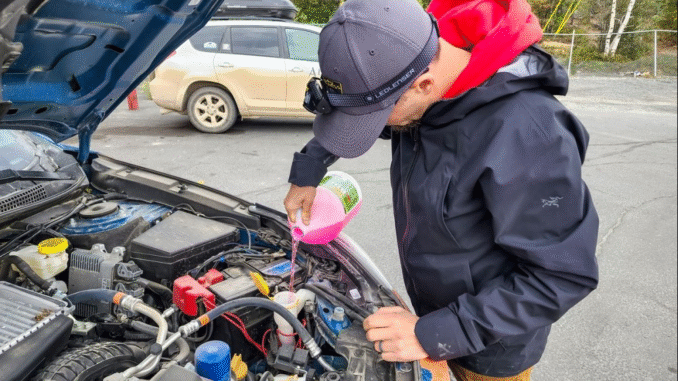
Essential Car Maintenance Tips to Keep Your Vehicle Running Longer
Owning a car is one of life’s great conveniences, but it also comes with responsibility. Regular maintenance is key to keeping your vehicle in top shape, extending its lifespan, and avoiding costly repairs. In 2025, as cars become more advanced with new technologies, understanding essential maintenance practices is more important than ever.
Whether you drive a traditional gasoline-powered vehicle, a hybrid, or a fully electric car, these essential car maintenance tips will help you keep your vehicle running longer and more efficiently.
1. Regular Oil and Filter Changes
For vehicles with internal combustion engines, oil is the lifeblood of the engine. It lubricates moving parts, reduces friction, and prevents overheating. Over time, engine oil breaks down and loses effectiveness, while filters collect dirt and debris that can clog the system.
Tip:
- Change your oil every 5,000 to 7,500 miles, or follow your manufacturer’s recommendation.
- Always replace the oil filter when changing oil.
- For hybrids and EVs, check cooling fluids and lubricants recommended by the manufacturer.
Keeping up with oil changes can dramatically extend the life of your engine and ensure smoother performance.
2. Maintain Proper Tire Care
Your tires are the only part of your car that touches the road, making them crucial for safety, fuel efficiency, and performance. Neglecting tire maintenance can lead to blowouts, uneven wear, and costly replacements.
Tip:
- Check tire pressure at least once a month. Properly inflated tires improve gas mileage and handling.
- Rotate tires every 6,000–8,000 miles to ensure even wear.
- Keep an eye on tread depth—replace tires when tread is worn down to 2/32 of an inch.
- Don’t forget to check your spare tire too.
Proper tire care not only extends tire life but also improves safety and ride comfort.
3. Check and Replace Brake Components
Brakes are one of the most critical safety systems in your car. Ignoring them can lead to accidents and expensive repairs.
Tip:
- Listen for squealing, grinding, or vibrations when braking.
- Have your brake pads inspected every 10,000–15,000 miles.
- Replace brake pads before they wear down completely to avoid damaging rotors.
- Keep brake fluid topped up and replace it every 2–3 years.
Healthy brakes provide peace of mind and ensure you can stop safely in any driving condition.
4. Monitor and Replace Fluids
Cars rely on multiple fluids beyond engine oil. These fluids help cool, lubricate, and protect essential systems. Neglecting fluid levels can cause breakdowns or system failures.
Important fluids to check regularly:
- Coolant/antifreeze – Prevents engine overheating.
- Transmission fluid – Ensures smooth gear shifting.
- Brake fluid – Maintains braking power.
- Power steering fluid – Provides easy steering control.
- Windshield washer fluid – Improves visibility during poor weather.
Tip: Follow your owner’s manual for fluid replacement schedules. Keeping fluids fresh and at proper levels can prevent major mechanical failures.
5. Replace Air Filters
Clean air filters keep dust, dirt, and debris from entering your engine and cabin. A dirty filter can reduce fuel efficiency, lower engine performance, and affect air quality inside the car.
Tip:
- Replace the engine air filter every 12,000–15,000 miles.
- Replace the cabin air filter every 15,000–20,000 miles, or more often if you drive in dusty conditions.
This simple and inexpensive maintenance task improves fuel economy and keeps your car’s systems running efficiently.
6. Inspect the Battery
A dead battery is one of the most common reasons cars fail to start. With modern vehicles relying heavily on electronics, battery health is more important than ever.
Tip:
- Check battery terminals for corrosion and clean them if necessary.
- Test your battery’s voltage at least once a year.
- Replace batteries every 3–5 years, depending on climate and usage.
- For electric vehicles, follow manufacturer recommendations for charging and battery care.
Regular battery inspections help avoid sudden breakdowns and costly replacements.
7. Keep Your Car Clean Inside and Out
Car maintenance isn’t just mechanical—it’s also about protecting the exterior and interior. Dirt, road salt, and grime can damage paint, while neglected interiors can wear out prematurely.
Tip:
- Wash your car every 2–3 weeks to protect paint and prevent rust.
- Apply wax every 3–4 months for added protection.
- Vacuum the interior regularly to protect upholstery.
- Use protective sprays for dashboards and leather seats to prevent cracking.
A clean car not only looks good but also maintains its resale value.
8. Pay Attention to Warning Lights
Modern vehicles are equipped with advanced sensors and warning systems. Ignoring dashboard warning lights can lead to major problems.
Common warning lights include:
- Check Engine Light – Could indicate anything from a loose gas cap to serious engine trouble.
- Oil Pressure Light – Signals low oil pressure, requiring immediate attention.
- Battery Light – Indicates charging system issues.
- Brake Warning Light – May signal low fluid, worn pads, or ABS problems.
Tip: Don’t ignore warning lights. Address issues promptly to avoid costly repairs.
9. Schedule Regular Professional Inspections
While many tasks can be done at home, a trained mechanic can spot issues you might miss. Scheduling regular inspections ensures your car is thoroughly checked for safety and performance.
Tip:
- Have your car professionally inspected at least once a year.
- Focus on brakes, suspension, belts, hoses, and emissions systems.
- Keep all service records—this not only helps track maintenance but also increases resale value.
10. Practice Smart Driving Habits
The way you drive directly impacts your vehicle’s longevity. Aggressive driving leads to unnecessary wear and tear, while smooth driving preserves your car.
Tip:
- Avoid sudden accelerations and hard braking.
- Warm up your engine before driving in cold weather.
- Don’t overload your car—extra weight strains the engine, brakes, and suspension.
- Use cruise control on highways to reduce fuel consumption.
Smart driving habits not only extend the life of your car but also save money on fuel and repairs.
11. Take Care of Belts and Hoses
Belts and hoses are often overlooked, but they play a vital role in keeping your car running smoothly. A broken belt or hose can cause engine damage and leave you stranded.
Tip:
- Inspect belts for cracks, frays, or glazing.
- Check hoses for leaks, swelling, or soft spots.
- Replace them every 60,000–100,000 miles, depending on manufacturer recommendations.
Catching wear early prevents costly breakdowns.
12. Don’t Skip Seasonal Maintenance
Different seasons bring unique challenges for vehicles. Preparing your car for changing weather ensures it can handle varying conditions.
Tip:
- In winter: Check antifreeze levels, battery health, and install winter tires if needed.
- In summer: Monitor coolant, tire pressure, and air conditioning systems.
- In rainy seasons: Inspect wipers, headlights, and tire tread for maximum visibility and grip.
Seasonal checks keep your car safe and reliable all year round.
Conclusion
Car maintenance may seem like a chore, but it’s one of the best investments you can make. By following these essential car maintenance tips, you’ll not only extend the life of your vehicle but also improve safety, fuel efficiency, and resale value.
From simple tasks like checking tire pressure and replacing air filters to professional inspections and seasonal checks, staying proactive can save you thousands in repair costs.
Remember: a well-maintained car isn’t just about longevity—it’s about peace of mind every time you hit the road.

